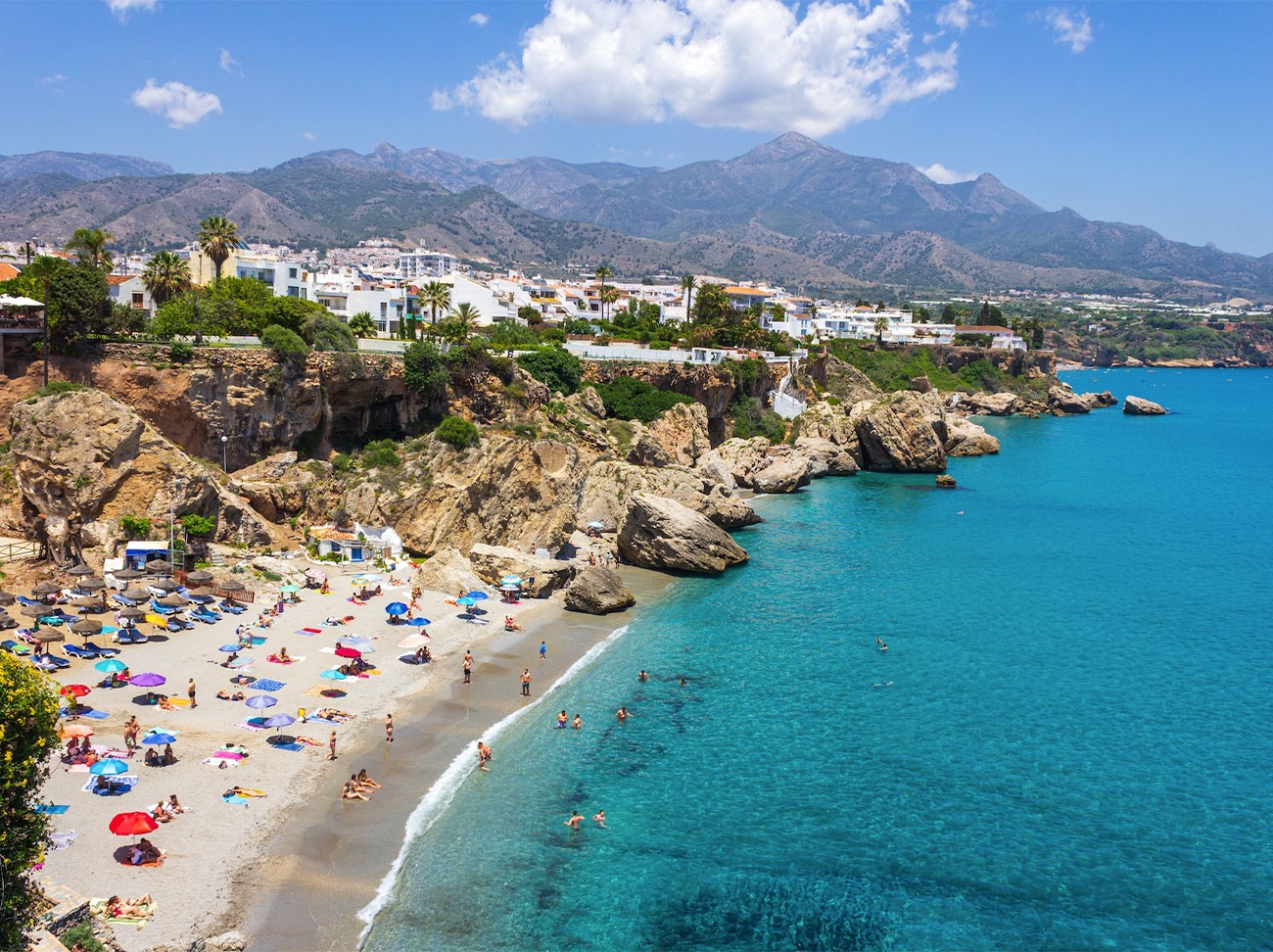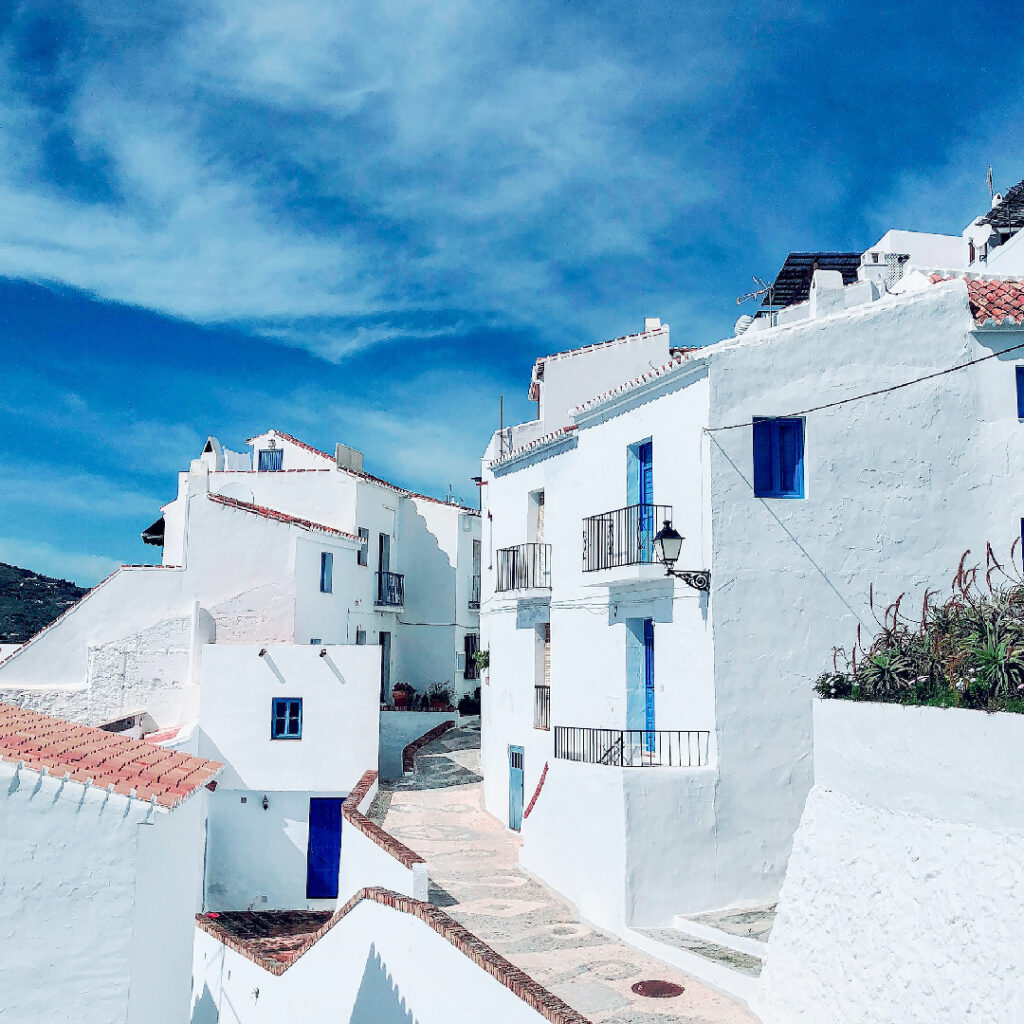
26 Jun Nerja – the secret gem of the sunny coast
It’s easy to like Nerja. Over the years, thousands of Scandinavians have fallen in love with the charming coastal town, located 60 kilometers east of Málaga airport, in the Axarquía area and with the Sierra de Almijara mountain range in the background.
Phoenicians and Greeks once established a fishing and trading center that was later strengthened by Romans and Byzantines. Berbers, Italians and Jews settled on the coast, but the Moorish pirates made the coast dangerous.
The name Nerja comes from the Moorish “narixa” which means “rich in water” or “abundant spring”. The city has roughly 22,500 inhabitants and over the years has become one of the most popular tourist destinations along the Costa del Sol. One of the reasons is that Nerja has retained its original Spanish charm with whitewashed houses, small, narrow streets and a wide range of good quality bars and restaurants. Another reason is that Nerja is on the more unspoiled side east of Málaga that still has the feeling of an Andalusian fishing village.
The city is quite young, if you compare it to other cities along the Costa del Sol. It was in the 9th century that the Moors settled here and the city became the center of the silk and sugar industry in the area. Later, it became a combination of fishing and farming community and grew considerably as the tourists began to arrive in the 1970s. Nerja still retains much of its small-town atmosphere and foreigners play a significant role in the city’s business life, especially the English.
Nerja is built around the remains of an ancient castle, known as the Balcón de Europa (Balcony of Europe), which is a rock that juts out into the sea in the middle of the city and was long ago an important defensive outpost against pirates. The “Balcony” got its name from King Alfonso XII when he visited Nerja in 1885. Today, the balcony is a tourist attraction in itself and the city’s main gathering place. Eastwards towards Almuñécar on the Costa Tropical, a microclimate has been created with one of the Costa del Sol’s most pleasant climates, allowing Nerja to offer locally grown exotic fruits such as mango, avocado, papaya and chirimoya. Skiing in the Sierra Nevada at an altitude of 3,400 meters is only a 1.5 hour drive from the city.
Burriana beach and Ayo's famous paella
The most popular and famous beach in Nerja is undoubtedly Burriana beach. It is approximately 800 meters long and 40 meters wide and although the road to get there is not the easiest, it continues to be one of the most visited beaches. At Burriana beach is also the city’s most famous paella restaurant. Here, on Sundays during the summer months, you can taste the famous paella, which is made by the owner Señor Ajo (formerly married to a Swede) at his restaurant of the same name, in pans that measure over a meter in diameter. It’s quite a spectacle to watch him cook it over an open fire, just as he has done every Sunday for 50 years.
The caves in Nerja
A short distance outside Nerja is also one of the most famous tourist attractions on the Costa del Sol, which is also counted as one of Spain’s most visited attractions with half a million visitors annually. It is about the world-famous stalactite caves in Nerja, called the Cathedral of Prehistory. Important finds from the Neolithic (approx. 3000 – 1800 BC) have been made here. The caves, which are classified as a national monument, were discovered by pure chance on January 12, 1959 by five youths playing in the area. Inside them, concerts and ballet performances are given during the summer festival. In part of the caves (the archaeological museum is located. The boys found the entrance to the caves, which today contain magnificent underground limestone formations in four halls, which are open to the public. The Hall of Catastrophe (Sala de Cataclismo) is the most spectacular with a giant stalactite, 49 meters high and 18 meters wide. The Waterfall Hall (Sala de Cascada) often hosts concerts, especially during the summer months. The caves are about five kilometers long and contain, among other things, the world’s tallest column, which has a place in the Guinness Book of Records, and the world’s oldest cave painting from In July 1960 they opened to the public but to this day only a quarter of the caves are accessible to visitors, just over 9,000 square meters out of a total of more than 35,000 square meters.
The white village of Frigiliana

Just six kilometers up the mountains from Nerja’s city center is the white-painted village of Frigiliana, a small Andalusian village with stairs and narrow winding alleys. The village is in two parts and in the valley is the village market. Artists and writers found their way here a long time ago and that is why the village is called the art gallery of the Costa del Sol. Frigiliana has also been awarded twice as Andalusia’s most beautiful village. But despite being a tourist attraction, Frigiliana has retained its charm with donkeys clattering along the narrow streets.





